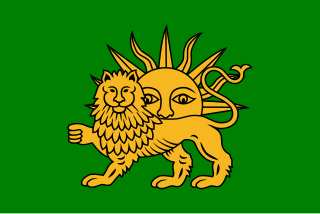 W
WThe Safavid dynasty was one of the most significant ruling dynasties of Iran from 1501 to 1736. The Safavid dynasty had its origin in the Safavid order of Sufism, which was established in the city of Ardabil in the Iranian Azerbaijan region. It was an Iranian dynasty of Kurdish origin, but during their rule they intermarried with Turkoman, Georgian, Circassian, and Pontic Greek dignitaries. From their base in Ardabil, the Safavids established control over parts of Greater Iran and reasserted the Iranian identity of the region, thus becoming the first native dynasty since the Sasanian Empire to establish a national state officially known as Iran.
 W
WAbbas the Great or Abbas I of Persia was the 5th Safavid Shah (king) of Iran, and is generally considered as one of the greatest rulers of Persian history and the Safavid dynasty. He was the third son of Shah Mohammad Khodabanda.
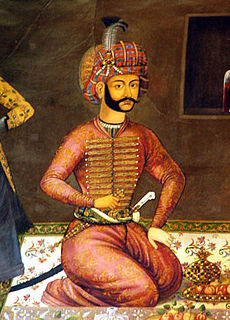 W
WShah Abbas II, was the seventh Safavid king (shah) of Iran, ruling from 1642 to 1666. Born Soltan Mohammad Mirza, he was the eldest son of Safi I with his Circassian wife, Anna Khanum.
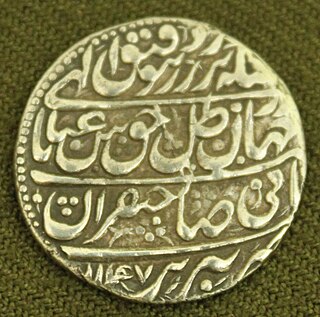 W
WAbbas III reigned 1732–1736; was a son of Shah Tahmasp II and Shahpari Begum of the Safavid dynasty. After the deposition of his father by Nader Khan the infant Abbas was appointed nominal ruler of Iran on 7 September 1732. Nader Khan, who was the real ruler of the country, assumed the positions of deputy of state and viceroy. Abbas III was deposed in March 1736, when Nader Khan had himself crowned as Nader Shah. This marked the official end of the Safavid dynasty. Abbas was sent to join his father in prison in Sabzevar, Khorasan.
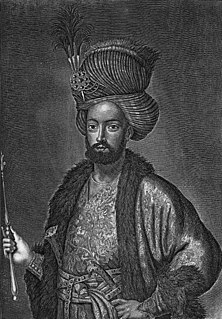 W
WSultan Husayn, reigned 1694–1722; was a Safavid Shah of Iran (Persia). He ruled from 1694 until he was overthrown in 1722 by rebellious marauder Mahmud Hotaki, an Afghan of Pashtun ethnic background. His reign saw the downfall of the Safavid dynasty, which had ruled Persia since the beginning of the 16th century.
 W
WIsmail I, also known as Shah Ismail I, was the founder of the Safavid dynasty, ruling from 1501 to 23 May 1524 as Shah of Iran (Persia).
 W
WIsmail Mirza later known by his first dynastic name of Ismail II was the third Safavid Shah of Iran, ruling from 1576 to 1577.
 W
WThe khanates of the Caucasus, or Azerbaijani khanates or Persian khanates, or Iranian khanates, were various provinces and principalities established by Persia (Iran) on their territories in the Caucasus from the late Safavid to the Qajar dynasty. The Khanates were mostly ruled by Khans of Turkic (Azeri) origin and were vassals and subjects of the Iranian shah (King). Persia permanently lost a part of these khanates to Russia as a result of the Russo-Persian Wars in the course of the 19th century, while the others were absorbed into Persia.
 W
WKhvajeh Ali Safavi was a son of Sadr al-Dīn Mūsā and grandson of Safi-ad-din Ardabili. He assumed leadership of the Safavid order after his father's death. According to Rudi Matthee / Encyclopedia Iranica, under Khvajeh Ali, the convictions of the Safavid order apparently shifted towards Shia Islam "under the influence of their main supporters—Turkmen tribes who adhered to a popular brand of Shiʿism". Originally, the order seemingly bore "Sunni convictions".
 W
WThe Second Kingdom of Kakheti was a late medieval/early modern monarchy in eastern Georgia, centered at the province of Kakheti, with its capital first at Gremi and then at Telavi. It emerged in the process of a tripartite division of the Kingdom of Georgia in 1465 and existed, with several brief intermissions, until 1762 when Kakheti and the neighboring Georgian kingdom of Kartli were merged through a dynastic succession under the Kakhetian branch of the Bagrationi dynasty. Through most of its turbulent history, Kakheti was tributary to the Persians, whose efforts to keep the reluctant Georgian kingdom within its sphere of influence resulted in a series of military conflicts and deportations.
 W
WThe Kingdom of Kartli was a late medieval/early modern monarchy in eastern Georgia, centred on the province of Kartli, with its capital at Tbilisi. It emerged in the process of a tripartite division of the Kingdom of Georgia in 1478 and existed, with several brief intervals, until 1762 when Kartli and the neighbouring Georgian kingdom of Kakheti were merged through dynastic succession under the Kakhetian branch of the Bagrationi dynasty. Through much of this period, the kingdom was a vassal of the successive dynasties of Iran, but enjoyed intermittent periods of greater independence, especially after 1747.
 W
WThe Mausoleum of Shah Abbas I is the burial place of Abbas I, the Safavid king of Persia. The mausoleum is located in Kashan, Iran. According to the dates on the mihrab of the tomb, the primary structure was built before 12th century. The structure was expanded in the Safavid era. In the southwestern portico, there is a rectangular stone, which originates in Caucasus.
 W
WMohammad Khodābandeh or Khudābanda, also known as Mohammad Shah or Sultan Mohammad, was Shah of Persia from 1578 until his overthrow in 1587 by his son Abbas I. He was the fourth Safavid Shah of Iran and succeeded his brother, Ismail II. Khodabanda was the son of Shah Tahmasp I by a Turcoman mother, Sultanum Begum Mawsillu, and grandson of Ismail I, founder of the Safavid Dynasty.
 W
WQahqaheh Castle is a castle located 85 kilometres away from Meshginshahr in Ardabil province, Iran. This castle was built in the mountains and was used as a jail for anti-kingdom politicians during the Safavid dynasty. Ismail II, the third king of the Safavid dynasty was the most famous person who was imprisoned in Qahqaheh Castle.
 W
WThe restoration of Tahmasp II to the Safavid throne took place in the latter part of 1729 by a series of battles fought between Nader, Tahmasp's commander-in-chief and Ashraf Hotaki. Despite nominally bringing Tahmasp to the seat of power, true authority still rested with Nader who had ever since the debacle in northern Khorasan managed to seize Tahmasp II as his vassal. As for Afghan rule, the Ghilzai Afghans were ejected from the Iranian Plateau permanently and in the following years were re-annexed by Nader whence they were once again absorbed into the Persian empire.
 W
WSheikh Junayd was the son of Shaykh Ibrahim, father of Shaykh Haydar and grandfather of the founder of Safavid dynasty, Shah Ismail I. After the death of his father, he assumed the leadership of the Safaviyya from 1447–1460.
 W
WSam Mirza, better known by his dynastic name of Shah Safi, was the sixth Safavid shah (king) of Iran, ruling from 1629 to 1642.
 W
WSafi-ad-din Is'haq Ardabili (1252–1334), was the Kurdish and Sunni Muslim eponym of the Safavid dynasty, founder of the Safaviyya order, and the spiritual heir and son in law of the Sufi master, Zahed Gilani, of Lahijan in Gilan province in northern Iran. Most of what we know about him comes from the Safvat as-safa, a hagiography written by one of his followers.
 W
WTeresa Sampsonia was a noblewoman of the Safavid Empire of Iran. She was the wife of Elizabethan English adventurer Robert Shirley, whom she accompanied on his travels and embassies across Europe in the name of the Safavid King (Shah) Abbas the Great.
 W
WThe Samtskhe-Saatabago or Samtskhe Atabegate, also called the Principality of Samtskhe, was a Georgian feudal principality in Zemo Kartli, ruled by an atabeg (tutor) of Georgia for nearly three and a half centuries, between 1268 and 1625. Its territory consisted of the modern-day Samtskhe-Javakheti region and the historical region of Tao-Klarjeti.
 W
WShaykh Haydar or Sheikh Haydar was the successor of his father as leader of the Safavid order from 1460-1488. Haydar maintained the policies and political ambitions initiated by his father. Under Sheikh Haydar, the order became crystallized as a political movement with an increasingly extremist heterodox Twelver Shi'i coloring and Haydar was viewed as a divine figure by his followers. Shaykh Haydar was responsible for instructing his followers to adopt the scarlet headgear of 12 gores commemorating The Twelve Imams, which led to them being designated by the Turkish term Qizilbash "Red Head".
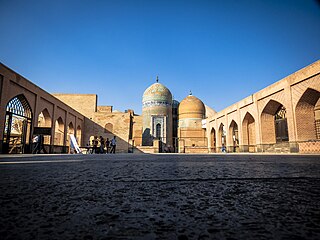 W
WSheikh Safi al-Din Khānegāh and Shrine Ensemble is the tomb of Sheikh Safi-ad-din Ardabili located in Ardabil, Iran. In 2010, it was registered on the UNESCO World Heritage List. This monument is situated in the Ali-Ghapu area.
 W
WSam Mirza, later known by his first dynastic name of Safi II, and thereafter known by his more famous second dynastic name of Suleiman I, was the eighth Safavid shah (king) of Iran, ruling from 1 November 1666 to 29 July 1694.
 W
WTahmasp I was an influential Shah of Iran, who enjoyed the longest reign of any member of the Safavid dynasty. He was the son and successor of Ismail I.
 W
WTahmasp II (1704? – 11 February 1740) was one of the last Safavid rulers of Persia (Iran).
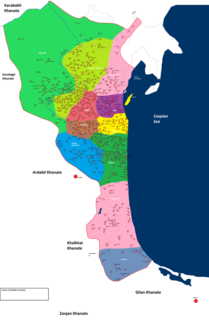 W
WTalysh Khanate or Talish Khanate was a khanate of Iranian origin that was established in Persia and existed from the middle of the 18th century till the beginning of the 19th century, located in the south-west coast of the Caspian Sea.